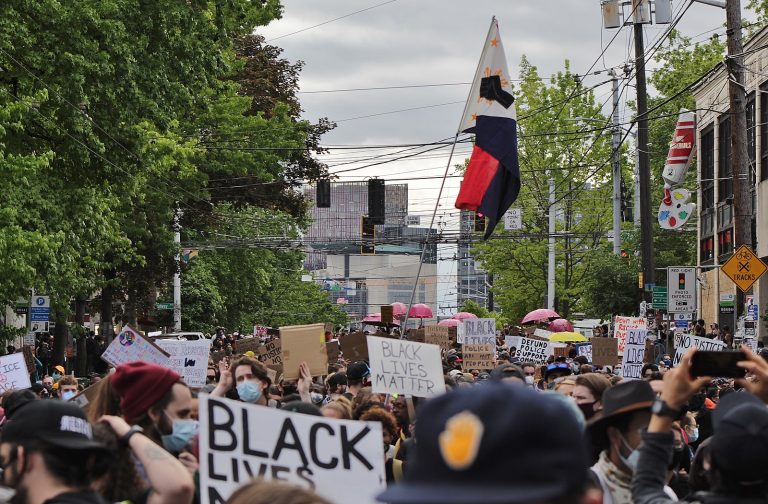Published on January 9, 2021

It took the ripples of outrage over the death of George Floyd in Minneapolis last May about three days to reach Seattle, driving thousands of protesters into the streets in solidarity with demands to end police violence against people of color and address, finally, the institutional racism that feeds it. Seven months later, those tear gas-filled early days of Seattle’s tumultuous summer have led to a standoff between a public clamoring for racial justice, embattled city leaders, a police department that’s faced heavy criticism for its handling of the protests, and a battered business community — all in agreement racism must end, but at loggerheads at just how to get there from here.
At the same time, the protests — sometimes involving tens of thousands of demonstrators — have given voice and momentum to an emerging social movement that has been embraced here in Seattle and neighboring Portland with an urgency and passion that made the Pacific Northwest a poster child for both ends of the political spectrum. For many Seattle area businesses, the protests of 2020 brought challenges that went well beyond shattered windows and scared-off customers.
In the wake of the chaotic, destructive demonstrations of May 29 and 30, when scores of businesses were hit by looting and vandalism in Seattle, Bellevue, Auburn, Renton, Tacoma and other Puget Sound-area communities, some businesses already reeling from the pandemic had a new obstacle. For large businesses, weathering the year’s crises arguably was made easier by deep financial resources and years of experience dealing with public relations emergencies. But those carefully calibrated responses weren’t always an option for smaller businesses — even as they, too, labored to keep customers and employees happy while signaling support to protesters and to stay open during a pandemic.
“Trying to wrestle with all those different perspectives, I think, is something that a lot of small businesses maybe had not reckoned with in the way that larger organizations had the opportunities to or, in some ways, [already had been] called upon to do in recent years,” said Ines Jurcevic, an assistant professor at the University of Washington Evans School of Public Policy & Governance and an expert in diversity management.
Continue reading at the Seattle Times.
Originally written by Mike Carter, Daniel Beekman, Heidi Groover, and Paul Roberts for the Seattle Times.